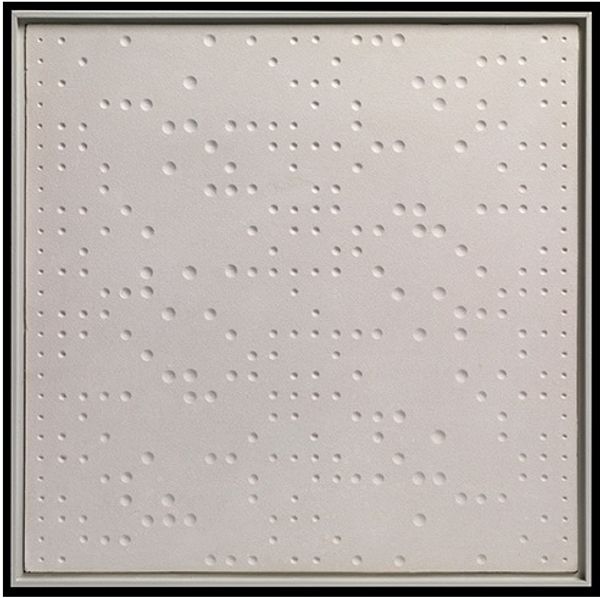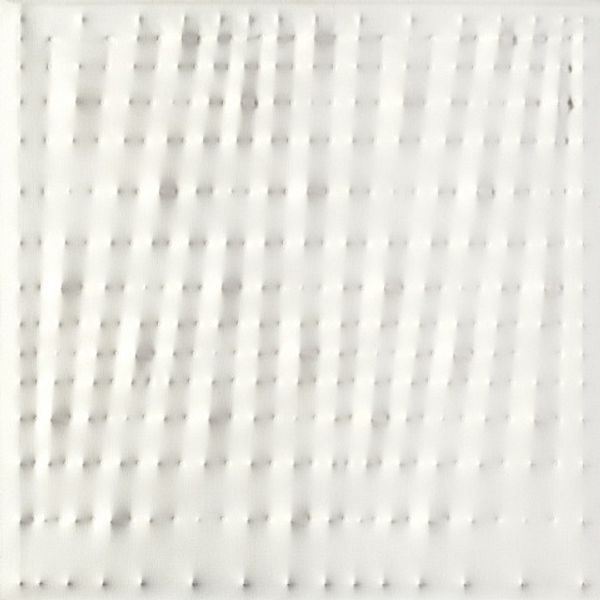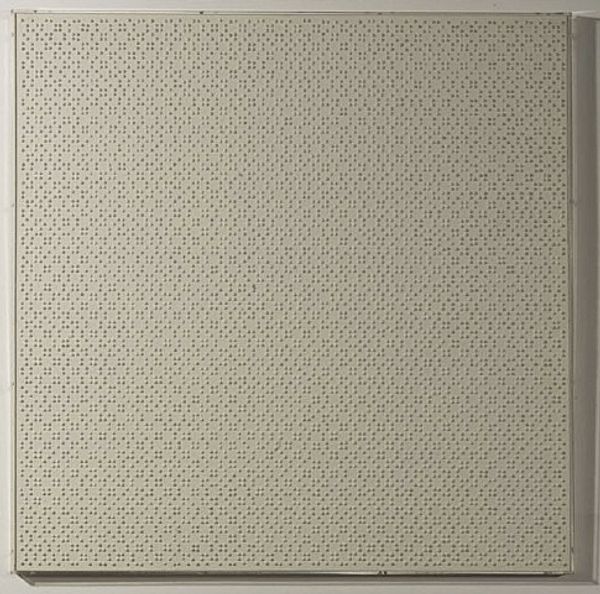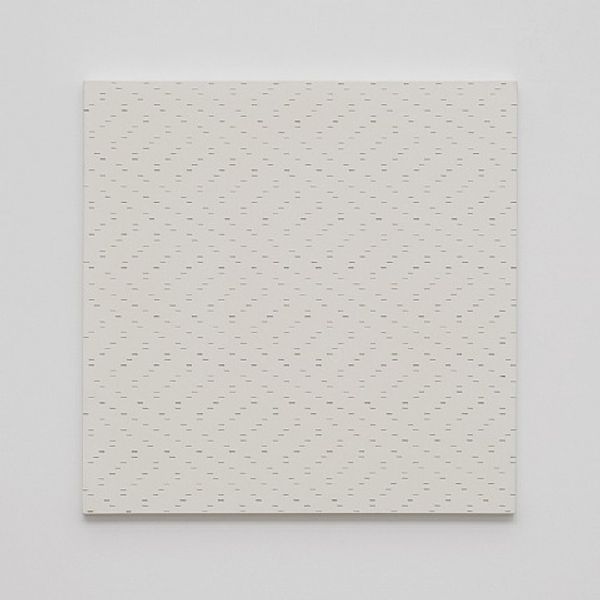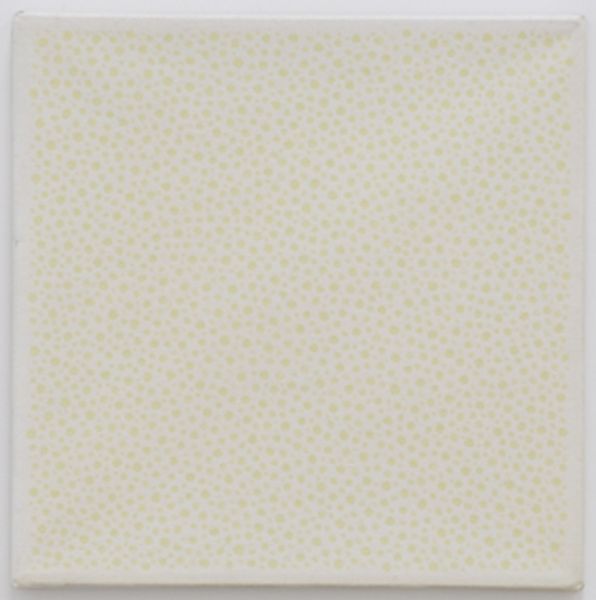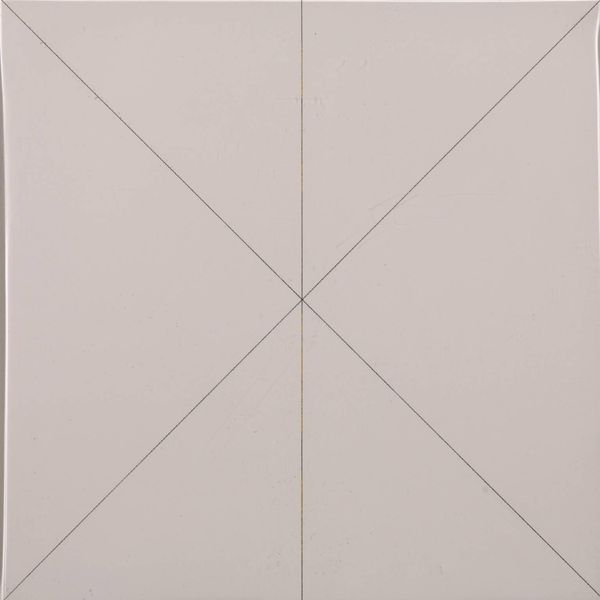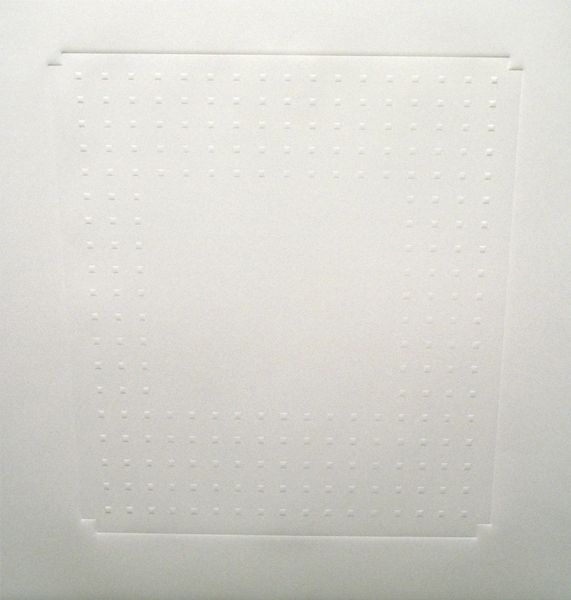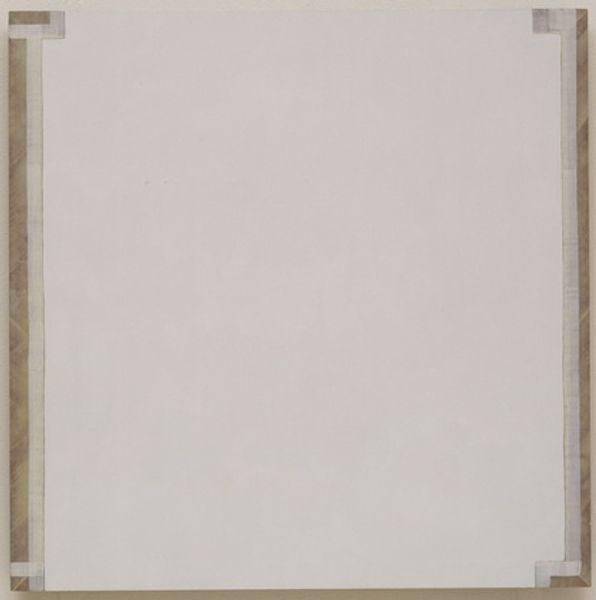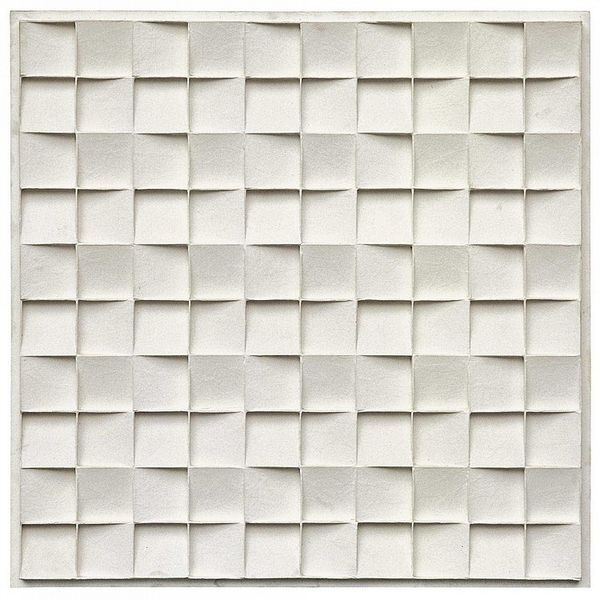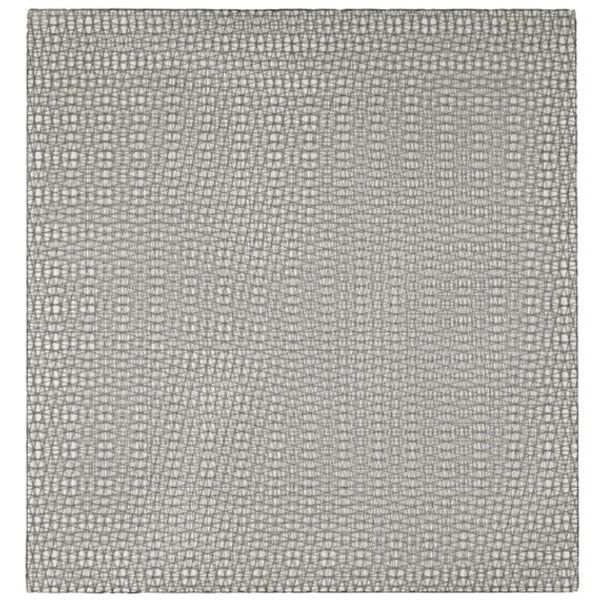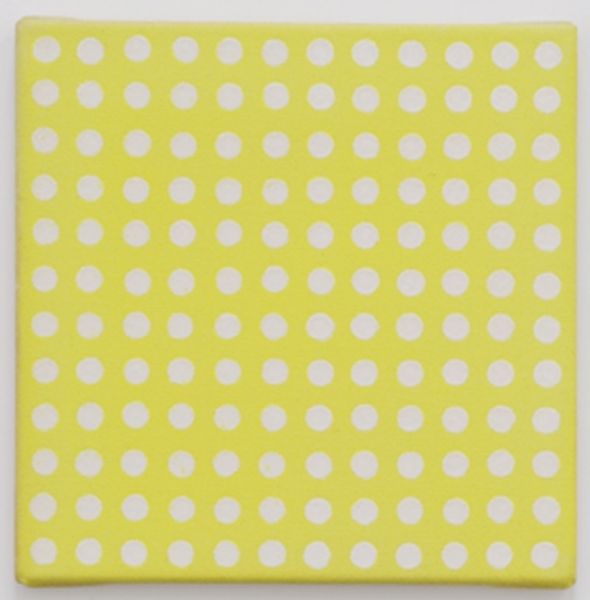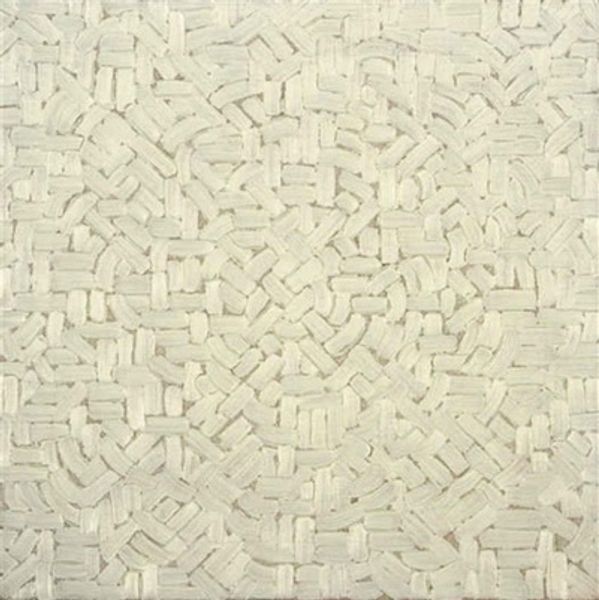
matter-painting, assemblage, relief, sculpture
#
concrete-art
#
matter-painting
#
assemblage
#
minimalism
#
pattern
#
relief
#
geometric pattern
#
subtle pattern
#
abstract pattern
#
rectangle
#
geometric
#
sculpture
#
abstraction
Copyright: Gerhard von Graevenitz,Fair Use
Editor: This is Gerhard von Graevenitz's "Weisse Struktur, Zufallsverteillung II," created in 1960. It’s described as a matter painting or assemblage and it looks like a white relief with lots of circular indentations. What is your interpretation of it? Curator: Well, consider the artist’s chosen materials, especially matter painting and assemblage techniques, challenging the divide between painting and sculpture. Von Graevenitz uses everyday, humble materials elevated to create “high art”. The indentations appear random, but consider the careful labor that went into making this. What kind of statement do you think this is making about process versus concept? Editor: That’s interesting. I was focused on the aesthetics, the monochrome, and the seeming randomness. So you are thinking about the artistic choices involved in what appears to be random and the manual processes that made it possible. It is like pointing out how industrial production appears random when mass produced. Curator: Precisely! The labor, the repeated gesture, transforms simple materials, making the consumption of art itself a consideration. Do you think the seemingly random pattern evokes a sense of order or chaos in relation to industrialized, abstract labour processes? Editor: It’s a really thought-provoking contrast. There’s a quiet, meditative quality in the white-on-white that initially feels calming. Then you realize that the labor might be the focus, not any narrative element. Curator: And what that tension communicates about art's purpose within a consumer society! How do you think the emphasis on materials reframes our understanding of the artist's intention, beyond just aesthetics? Editor: I think it prompts us to question art’s inherent value. Looking closer, the value emerges from considering artistic intention, laborious craftsmanship, and social commentaries of mass production. Thank you, this opened my eyes to more subtle considerations about art. Curator: My pleasure, it’s by looking past the aesthetic appearance, that art becomes relevant, isn't it?
Comments
No comments
Be the first to comment and join the conversation on the ultimate creative platform.
